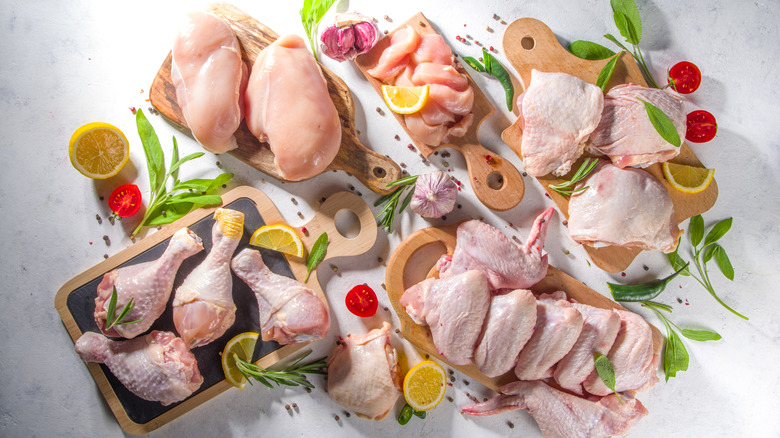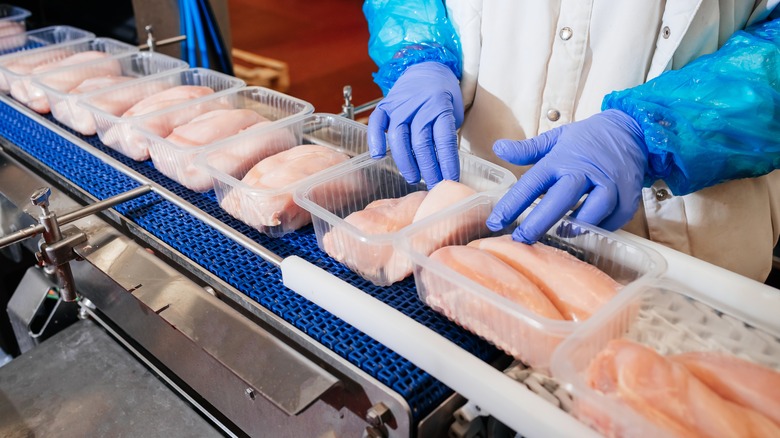The USDA Is Suggesting Big Changes To Reduce Poultry Food Poisoning Cases
Chicken and turkey are both very common meats on the plates of Americans. Chicken was the most consumed type of meat in the U.S. as recently as 2020, per Statista, and with Thanksgiving coming up in little over a month, many Americans are going to be roasting turkeys soon. While certainly delicious, chickens and turkeys combined have the downside of being responsible for roughly a quarter of all salmonella cases in the country each year, according to the Associated Press. That amounts to about 250,000 cases.
Salmonella is a bacteria that causes diarrhea, fever, and stomach cramps for about a week, starting a few hours to days after eating infected food (via Centers for Disease Control and Prevention). While most people survive — sometimes with the help of antibiotics and/or hospitalization — there are hundreds of deaths in the U.S. annually due to salmonella. It's a serious concern, one which the USDA has been attempting to curtail for decades, with some success.
Consumers are advised to handle raw poultry with care. Washing chicken and turkey in raw form is discouraged, since the water spreads salmonella. Any kitchen tools used on raw poultry should be kept separate from other equipment during preparations. Meat should be thoroughly cooked to kill off pathogens. These tips are all well and good, but the USDA is looking to further address food safety problems by cutting issues off at the source. As a result, the organization has suggested some big changes to poultry.
Proposed changes
The USDA has put forth three proposals. The first suggested measure is to test chickens and turkeys for infection before they enter a processing facility. The second one is to monitor more closely for bacteria while the meat is being processed. The third is to set a specific limit for how much salmonella can be present in sellable poultry. While there are 2,500 salmonella serotypes — strains of microorganism — just a trio of them cause 33% of all chicken-and-turkey salmonella cases (via Associated Press). These guidelines may focus on those types in particular.
Such measures would effectively regulate the processing pipeline and encourage farmers to take more precautions upfront. The obvious downside is the increased labor and costs the poultry industry would face, but saving lives outweighs that. Similar steps have been taken in the U.S. ground beef industry, so it's not unthinkable. Besides, from a societal standpoint, U.S. foodborne salmonella cases cost the economy about $4 billion each year (that's all cases, not just chicken and turkey — but one can estimate a $1 billion loss, based on chicken and turkey causing a fourth of all cases).
At this point, these measures have only been proposed, not yet implemented. Come November 3rd, 2022, a public meeting will be held to get feedback. The USDA wants to start putting changes into effect sometime during 2023 and then finish doing so come 2025. As such, the government is hoping for a 25% reduction in these infections by 2030.

